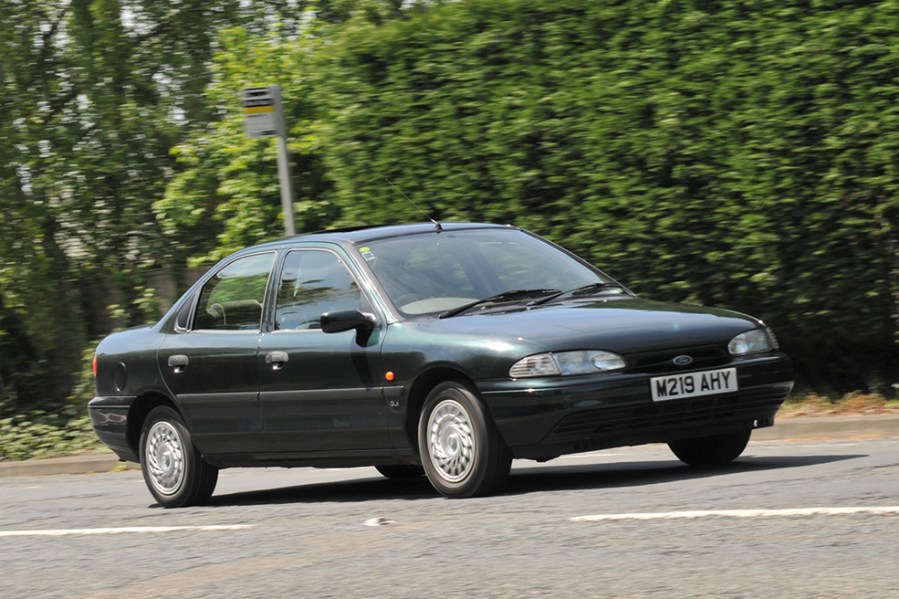It’s hard to believe that 1993 was 30 years ago – and now, many of the cars that arrived that year have become bona fide classics. Here are our picks from 1993
Words: Simon Jackson
Ford Mondeo
Ford began working on the Mondeo in the mid-1980s, its replacement for the Sierra being intended as a world car from the outset, a design that could work across different continents. It was known as project CDW27, ‘CD’ because it would straddle the C and D sectors, and ‘W’ referring to ‘World’. Ford set the bar deliberately high, benchmarking against the very best cars of the era to establish a set of goals, while focus groups in North America and all around Europe provided further targets.
With the Sierra name retired, Ford devised a new moniker, with the ‘monde’ part of Mondeo meaning ‘world’ in French. In the States, the names would be the Ford Contour and Mercury Mystique.
Underneath would come an entirely new front-wheel drive platform that, while not exactly revolutionary, was well-appointed and considered, powered by modern multi-valve engines. Sitting atop would come a body styled to appeal to a global audience – easier said than done. The Sierra’s looks, which had caused quite the headache for its maker, had seen it nicknamed the ‘jelly mould’ – and Ford could ill afford to suffer the same fate again.
All four of Ford’s design offices in California, Cologne, Dearborn and Torino were given the same brief, with the Germans emerging ahead. However, there would be further finessing which would incorporate various elements of the other designs. The first prototypes were completed by September 1989, with the final design signed off in 1990.
The Mondeo’s world reveal was at the 1993 Geneva Salon, where the newcomer proved a hit. It went on to achieve healthy sales from the outset, and was named European Car of the Year for 1994. There was a wide range of models available from the get-go, fitted with the new 16-valve Zetec engine in 1.6-, 1.8- and 2.0-litre sizes. Specifications were impressive, with power steering and a driver’s airbag as standard on even the entry-level offering. The Mondeo was the first production car to be fitted with an airbag across the board.

Alongside the base trim level came LX, GLX and Si models adding more luxury, while the Ghia – complete with air conditioning – topped the range. A 1.8 turbo-diesel variant soon followed, while in October 1994 a 2.5-litre 24-valve V6 arrived. Gearbox options were the hardy MTX-75 five-speed manual and a four-speed auto complete with driving modes. Underlining the technological advances, traction control and active damping were options. An estate joined the range to further extend the levels of practically available.
The Mondeo Mk1 was everything Ford needed it to be, so much so that it became known as Britain’s everyman car. The phrase ‘Mondeo Man’ became ingrained in British culture by the late 1990s.
A facelift arrived in 1996, which saw the range of engines and model choices widened. Then in 1997 the sporty ST-24 debuted, followed in 1999 by the ST200 that earned praise for its impressive performance. The new millennium then saw the launch of the second-generation Mondeo, slightly larger than it forebear and with more angular styling in tune with the times. Needless to say, the Mk2 proved to be another major hit for Ford, complementing the huge sales success of the New Edge-styled Focus that had arrived in 1998.
These days, 30 years on from the original’s launch and just one year after the very last European-spec Mondeo rolled off the production line, it is the Mk1 that stands out as one of Ford’s greatest modern achievements. Indeed, the original Mondeo is now widely considered a genuine modern classic.
Early examples are certainly scarcer than they once were, but these are simple cars to work on with low running costs, making them an ideal starter classic. Prospective buyers should pay particular attention to tired suspension; worn track control arm bushes can cause cars to pull to the left, so look for uneven tyre wear as a sign. Failed catalytic converters on 2.5 24v V6 cars are not unheard of – the model has three and they can cause engine management issues. Ensure automatic gearboxes change smoothly; the fluid should be red, not black. And do check for rust, paying special attention to the area around the rear wheelarches – a moisture trap where corrosion can take hold quickly.
A budget of just £1500-£4000 buys a clean Mk1 Mondeo, though the Mk2 – priced from £2000 – is more prevalent. Those in the market for a sporty ST200 can today expect to pay in the region of £8000.
Rover 600
It was the middle of the 1980s when discussions began about how best to eventually replace the Montego. Another major collaboration between Rover and Honda was on the cards, but the challenge was stiff in a growing market sector saturated with talent, including the BMW 3 Series and Mercedes-Benz 190.
A re-engineered version of Honda’s Accord ended up forming the basis of the Rover 600 and, perhaps surprisingly, it surpassed pretty much all expectations when it was launched in April 1993. The Rover offering beat the Accord to market by two months, and road tests were positive at the time.
The collaboration saw the Honda-derived chassis draped in Rover bodywork. A trio of petrol engines (1.8-, 2.0- and 2.3-litre) came from the Japanese, while the 2.0-litre turbo-diesel was an evolution of the existing Rover design. In comparison with the Montego, the 600 represented a good step up in performance and equipment levels. Both models co-existed for a time, with the Montego saloon disappearing first, followed by the estate by the end of 1994.
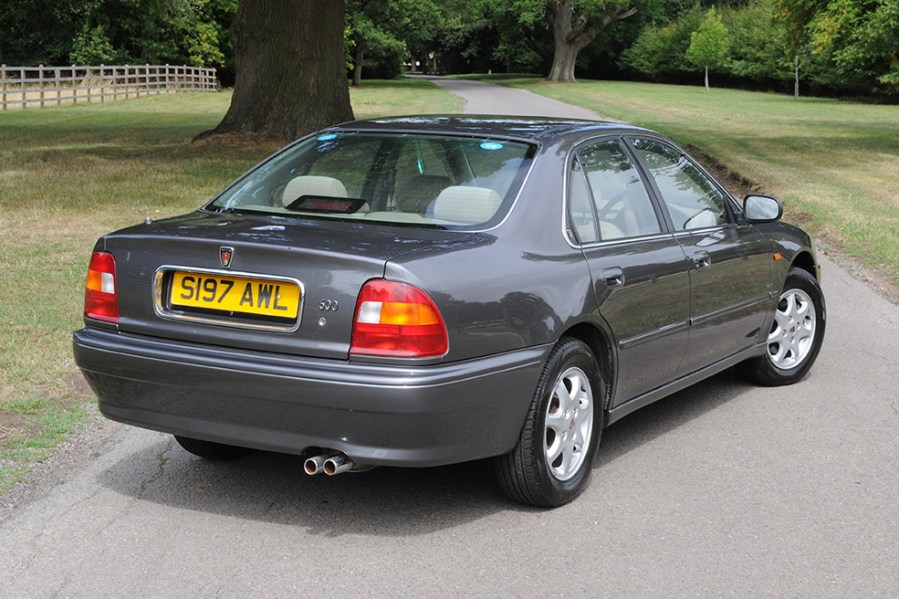
That same year saw Rover launching the noteworthy 620ti. The understated executive saloon boasted a 197bhp turbocharged 2.0-litre T-Series Rover engine, bringing an impressive 0-60mph time of seven seconds, while uprated suspension improved handling.
In February 1996 came a 600-series update, with the entry-level engine replaced with a smaller unit, and changes to trim levels falling in line with the Rover 800. However, Rover was already eyeing its replacement, the 75, and so further tweaks in 1998 were mild. When production ended in 1999, more than a quarter of a million Rover 600s had rolled from the Cowley line.
Those in the market for one should watch for head gasket failures, especially on 2.3 engines, as this has been known to lead to cracked blocks. These cars are not as bad as older Rovers for rust, although the rear wheelarches, front wings and sills are the areas most susceptible, so give these a thorough check. Prices are low, making the 600 a bargain modern classic; mid-range models go for £1500-£3000, but they are increasingly rare.
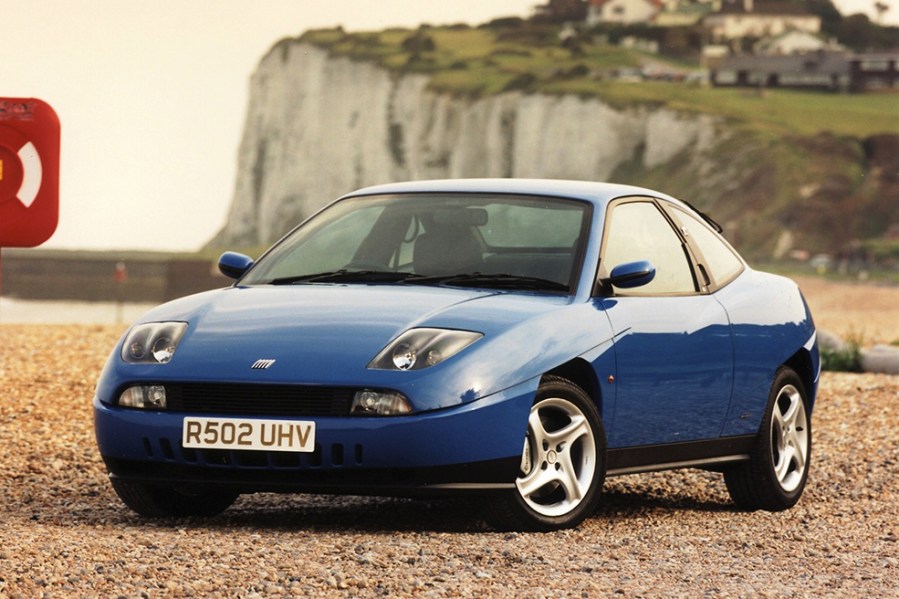
Fiat Coupe
During the early 1990s, Centro Stile – Fiat’s in-house design team – was staffed by American Chris Bangle, the designer who would make so many headlines through his later work with BMW. Centro Stile put forward Bangle’s vision for a new coupe based on the defunct Tipo platform, while Pininfarina presented its own drawings. Of the two, Fiat’s management loved Bangle’s option, although the Pininfarina concept would live on to become the Peugeot 406 Coupe.
Leaked images of the new Fiat Coupe undergoing testing in 1992 caused a stir, and when it was eventually launched in 1994 it did not disappoint. The new Fiat was available with both 137bhp normally aspirated and 187bhp turbocharged versions of the same four-cylinder, 2.0-litre 16v engine. The unit had form, being a development of the twin-cam design used in the legendary Lancia Delta Integrale. In 1996 came a mild facelift, and Fiat also added a five cylinder 20V engine, again available either with (217bhp) or without (145bhp) a turbo. Both powerplants featured a Viscodrive limited-slip differential to aid handling.
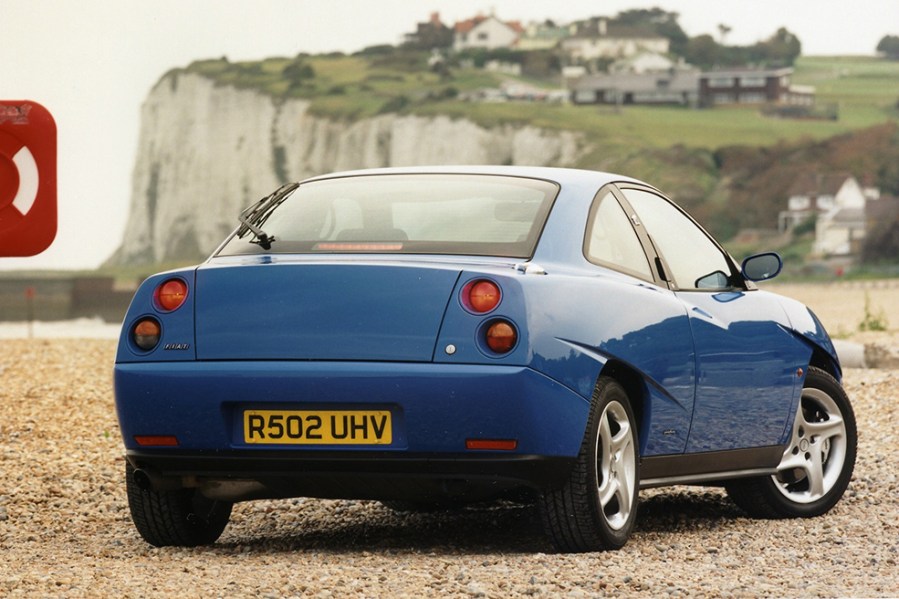
A Limited Edition arrived in 1998, complete with body kit, Brembo brake calipers and Recaro seats. Notably, it also came with a six-speed gearbox. That same year a Variable Inlet System hiked power to 150bhp for the entry-level car, while a Turbo ‘Plus’ model provided a specification almost identical to that of the aforementioned Limited Edition. Further revisions appeared in 1999/2000, including new seats and additional airbags, while the six-speed gearbox became standard.
Some 30 years on from its launch, buyers should watch for engine issues caused by auxiliary belt failure, which this leads to cambelt failure. Meanwhile, if the lengthy coolant hose at the back of the turbo engine fails, it proves catastrophic. Check the condition of the rear brake pipes as these can rust and leak. Rust on the wheel arches, rear end, slam panel and bonnet are typical of the model. Prices range from £2000 for a project to around £14,000, though a budget of between £8000 and £10,000 buys a nice car that’s been well cared for.
Aston Martin DB7
You can trace the convoluted genesis of the Aston Martin DB7 all the way back to the late 1980s, when Jaguar began working on a replacement for the XJ-S. Tom Walkinshaw’s TWR outfit was tasked with the job, and designer Keith Helfet and a young Ian Callum penned an effective concept, with the XJR XX interesting the suits at Jaguar. However, rather than paying TWR for the design, it simply employed Callum, giving rise to the XK8.
More than a little upset, Walkinshaw turned to Aston Martin – newly acquired by Ford – with his proposition, which happened to use a high percentage of Jaguar parts. Ford, of course, owned Jaguar, too; and Aston’s chief executive, Walter Hayes, jumped at the opportunity.
The DB7 was revealed at the 1993 Geneva Motor Show and entered production the following year. It shared much with the Jaguar XK8, including its repurposed XJ-S floorpan and, initially, its Jaguar engine – the XJ40’s supercharged 335bhp 3.2-litre AJ6 unit. Both cars heavily borrowed from the Ford parts bin.
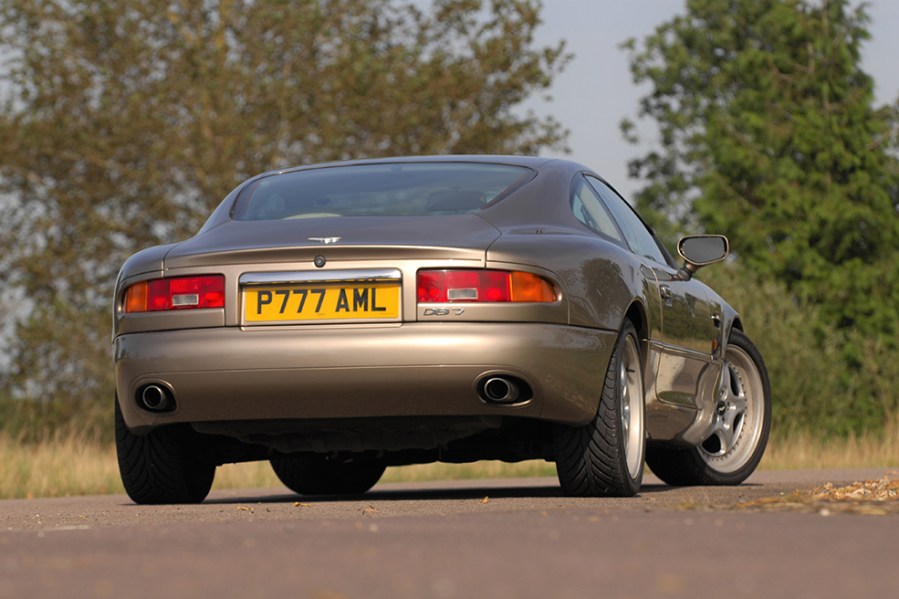
A convertible (Volante) version followed in 1998. However, the launch of Jaguar’s XK8 soon forced Aston to make adjustments to the DB7. Two Cosworth Duratec V6 engines were joined to create a new 6.0-litre, 48-valve, V12 unit mated to either a six-speed manual or five-speed automatic gearbox. The revised DB7 Vantage debuted at the 1999 Geneva show, with production of the entry-level straight-six finishing that year. In 2002 came the new V12 GT and GTA, an improved version of the Vantage, though these were limited to just a few hundred. The Zagato of 2003 is widely considered the best, though only 99 were made.
Aston Martin built more than 7000 DB7s before it was replaced in 2004. Today, on its 30th anniversary, it has become an enticing prospect, but buyers should only consider cars with good service histories. Oil coolers leak on the straight-six car, and the V12s are prone to overheating. Manual cars are generally more reliable than automatics, and electrics can be costly to fix; ensure that the air conditioning, lights and electric windows all work. Today’s prices tend to range from just £15,000 to £40,000-plus.
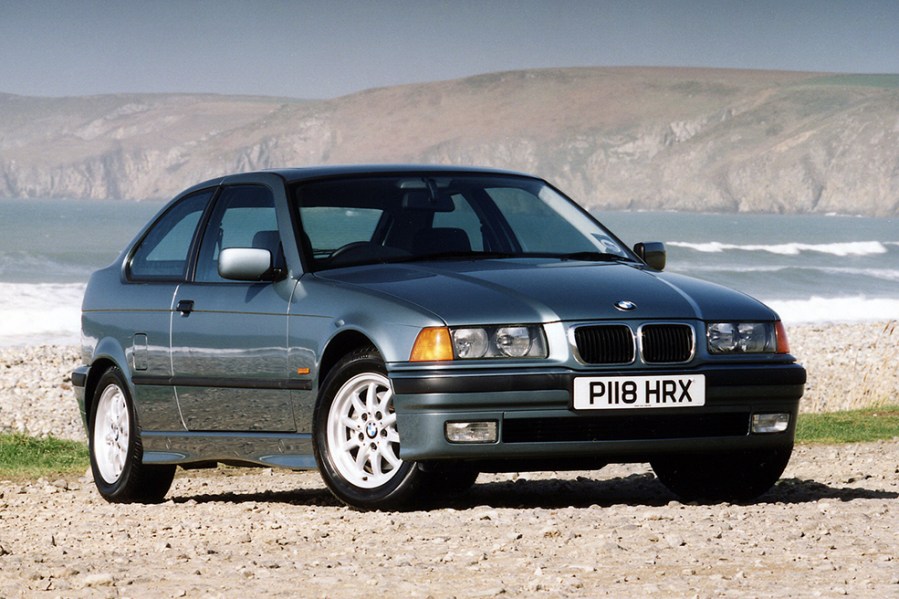
BMW 3 Series Compact (E36/5)
BMW’s past isn’t exactly littered with unpopular cars, yet the 3 Series-based Compact of 1993 is often maligned – and in hindsight, this seems rather unfair. From its A-pillar forwards, the three-door Compact is identical to its larger stablemate, the E36 3 Series saloon. Visually ‘compact’ when compared with the 3 Series, the E36/5 was actually only 20cm shorter and its wheelbase was identical.
BMW’s first hatchback since the 2002 Touring was initially powered by a choice of two four-cylinder petrol units: a 102bhp 1.6-litre (316i) and a 140bhp 1.8-litre (318ti). Performance was ample if not electric; but this was a car intended to entice a younger customer into BMW ownership, and therefore majored on lower running costs. Unlike most of its direct competitors, the Compact was true to BMW form, driven by its rear wheels.
September 1996 saw the Compact undergoing a facelift with revised bumpers and lighting, while in 2001 it began to use the later E46 3 Series platform (now being called E46/5). The range of engines expanded over the years to include six-cylinder petrol and diesel units, before the 3 Series Compact was replaced by the 1 Series in 2004.
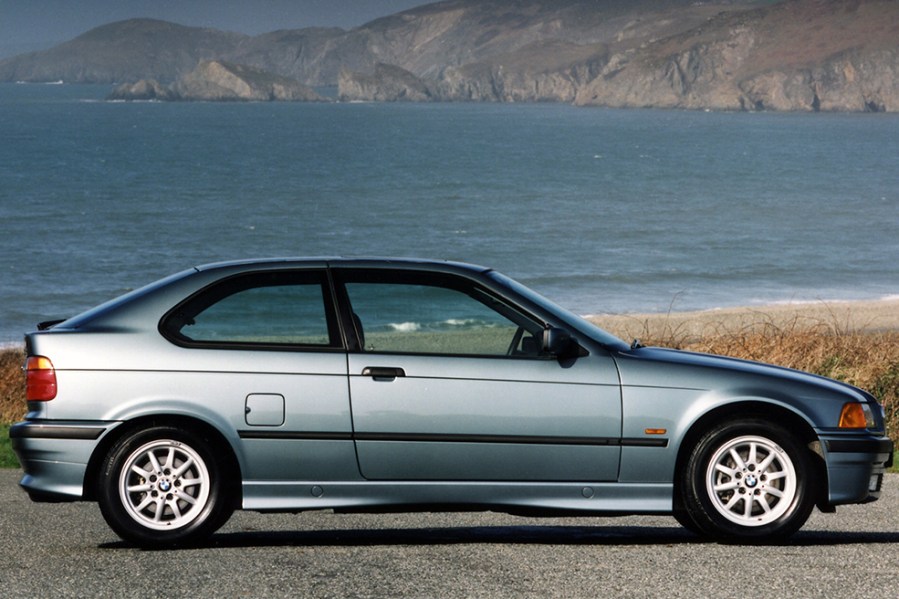
Today, those early cars are the ones most would consider modern classics. The sweet spot is arguably the 323ti (though they are rare), thanks in no small part to their use in dedicated motorsport championships. The 318ti Compact Sport of 1999, therefore, is one of the second best options; its 140bhp 1.9-litre engine makes it a good all-rounder with a hint of E30 magic about it.
The 1.6 and 1.9 TU M43 engines suffer head gasket failure, while the diesel in the 318tds is tough if unrefined. All Compacts used the Getrag five-speed manual gearbox, which is better to use than the four-speed automatic borrowed from General Motors. Differentials can get whiny with old age, while suspension weak points are the front dampers and rear axle beam bushes. Common rot spots are the front wings, rear arches and sills. Prices today typically range from £1300 to £7000 for an early Compact, while a budget of around £3500 should secure a nice example.

